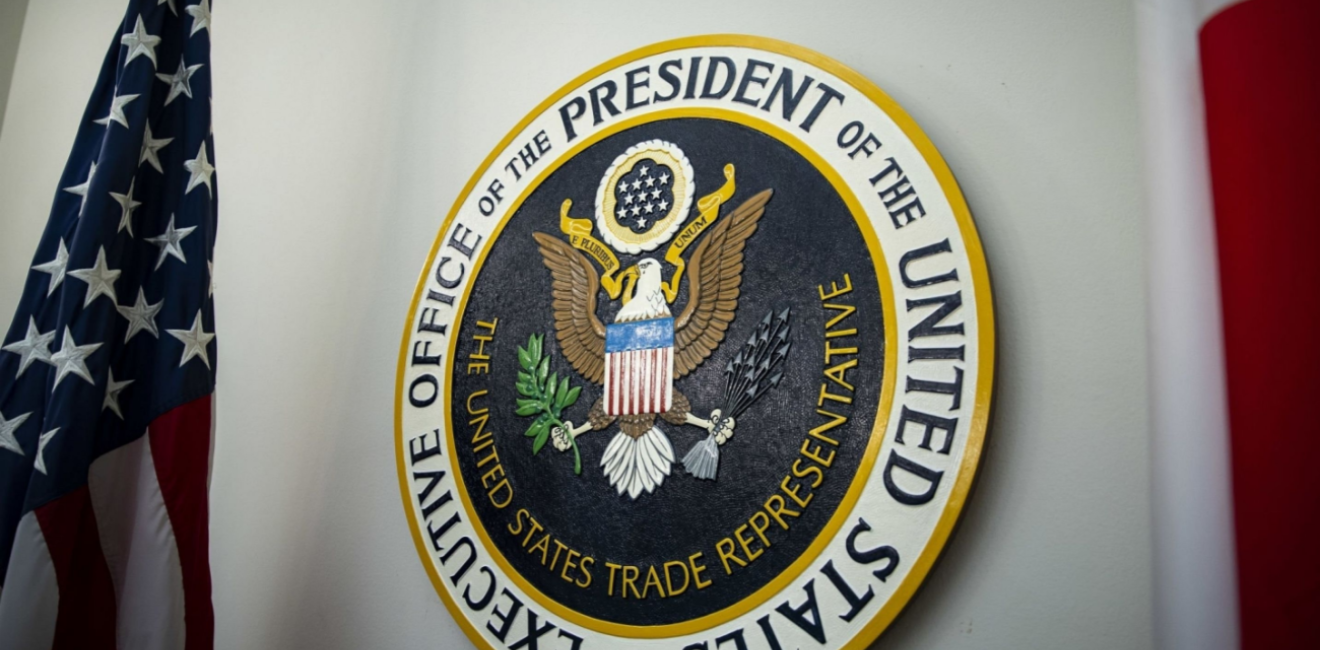On June 15, United States Trade Representative Katherine Tai's delivered remarks at the National Press Club on “Supply Chain Resilience.” She described “how the US trade agenda is prioritizing resilience in the global economy” by “flipping race-to-the-bottom dynamics on their heads to create a race to the top.” In this collection, Wilson Center experts analyze the implications of the ambassador’s remarks.
Impassioned Plea for Protectionism
Marc L. Busch
Wilson Center Global Fellow; Karl F. Landegger Professor of International Business Diplomacy at the Edmund A. Walsh School of Foreign Service at Georgetown University
United States Trade Representative Katherine Tai delivered an impassioned plea for protectionism in her recent speech to the National Press Club. She argued that in the past, US trade policy was all about pursuing efficiency gains “at any cost” for the “bigs.” By bigs, she presumably means big companies. She calls this a “race to the bottom.” Instead, Ambassador Tai says the Biden administration wants to raise standards for workers by using trade policy “to create a race to the top.” This, she concedes, means consumers will not benefit from “artificially low costs and low prices.” But it will result in “diversified jobs,” more “US-based production,” and a “vibrant middle class.” Sound familiar? It’s protectionism repackaged.
In Tai’s view, if a foreign company is a low-cost producer of a good, this is “artificial” and “unfair,” not a reflection of comparative advantage. This is clear in her telling of the story of a GM truck plant that closed in Indiana, in UAW President Shawn Fain’s hometown. The purported example made semiconductors for vehicles, and was shuttered in 2017. Tai blames this on cheap imports, concluding, “This is what a race to the bottom looks like.” This is misleading. The plant was more a victim of technology than trade. Protectionism could not have saved it. Protectionism would also likely permanently drive closure of GM’s truck plant in Gary, which requires inputs from 22,000 suppliers, many overseas. How would a race to the top have played out, and at what cost?
Tai also talks about the US as if it exists in a vacuum. What if other countries also race to the top? What if developing countries retaliate for these races to the top as “disguised” restrictions on trade? And why, if the Biden administration has devised a sure-bet approach to trade policy, aren’t other countries following the administration’s lead? Canada and the European Union, for example, demand high-standards trade and are longstanding champions of labor and environmental standards, in particular. Yet both have also managed to agree and ratify an impressive number of “traditional” free trade agreements. The same goes for the UK, which wants a bilateral with the US, and is willing to agree to any labor and environmental standards to secure it. The Biden administration has shown no interest. Consider that if the US is not eager to work with a key ally in racing to the top, the approach is all smoke and mirrors.
Notably, Tai made one reference to farmers, one to services, and none to innovative industries. She mentioned exports twice, once regarding restraints, the other to duties. This view of America on its heels serves protectionists’ interests, but it’s wrong. Do not confuse this with some new normal.
Hostile to Free Market Economics, Class-Based, and Anchored in the Populism
Jerry Haar
Wilson Center Global Fellow, Professor and Executive Director for the Americas, Florida International University
In a major speech at the National Press Club, US Trade Representative Katherine Tai put forth an “unapologetically positive vision” for trade that places the interests of workers and smaller businesses ahead of those of big corporations. Yet the reality is her “positive vision” is conceptually flawed. It is hostile to free market economics, class-based, and anchored in the populism that has become the permanent flavor-of-the-month of progressives and many conservatives.
While it may be politically convenient to treat “big corporations” as a whipping boy, we should be fair and acknowledge two things: (1) any tax or regulatory benefit big corporations receive is not bestowed upon the firms, but by both Republicans and Democrats in Congress who awarded them the benefits; and (2) scores of workers and small businesses benefit from big companies as employees or suppliers. For example, Boeing has 12,000 active suppliers – more than 6,000 of them small and diverse businesses. Of those, approximately 600 are veteran-owned and some 850 are women-owned. Walmart’s US business operations sourced more than $13 billion in goods and services from approximately 2,400 diverse suppliers in FY2023.
Both Ambassador Tai and White House National Security Adviser Jake Sullivan fail to understand that the country does not need a “trade policy for the middle class” —it needs effective implementation of existing trade agreements, assurance of compliance by our trade partners (and punitive measures if they do not comply). It also needs far greater public investment in infrastructure, upskilling of American workers, and pro-growth tax and regulatory policies. If done correctly, the result will be a trade policy not just for one social class—the middle class—but for all Americans.
Sliding Down Slippery Slope Instead of Expanding Markets for US Products and Services
Mark R. Kennedy
Director of Wahba Institute for Strategic Competition, Former US Congressman and presidentially appointed member of the Advisory Committee for Trade Policy and Negotiations
A slippery slope leads from resilience down to protectionism. United States Trade Representative Katherine Tai’s speech at the National Press Club on “Supply Chain Resilience” reflects a race toward the bottom of that slippery slope.
Any attempt to portray protectionism as something positive requires focusing only on narrow pieces of an overall picture. Ambassador Tai’s speech is a collage of narrow pieces, but it excludes the broader view.
- Tai observes, “A digital transformation that continues to accelerate and transform our world” but does not acknowledge that most of the “harms” that she attributes to trade are a result of the transformation that technology is unleashing.
- She lambasts firms “whose market power is directly supported by foreign governments” that “threaten America’s economic standing in the world.” However, she fails to concede that the protectionist features of the Inflation Reduction Act directly supporting American firms’ market power is undermining US credibility in the world, as reflected in the complaints of America’s closest allies.
- She praises success with the USMCA in “using a trade agreement to bring real and tangible improvements to people’s lives” but does not admit that more standard-raising trade agreements could further elevate global labor and environmental standards.
- Tai professes a concern for the “underserved and vulnerable,” yet ignores that whether using the yardstick of the United Nation’s Human Development Index or the Social Progress Initiative’s Social Progress Index, they are far better served through more economic freedom.
- Tai evokes the dangers a “concentration of production outside our borders—and in the People’s Republic of China (PRC) in particular — present(s) to US national security.” But she fails to observe the rising security risk of pivotal countries growing closer to the PRC as it seeks closer trading ties while the US shuns new trade agreements.
As the US appropriately imposes selected technology restrictions for genuine security reasons, it risks splitting the market in restricted technologies as the PRC develops an alternative. Unless the US aggressively pursues expanded trade, it will face a significant risk – the PRC, with its industrial might and strong connections to the Global South, could capture enough market share in key technology sectors to prevent American firms from sustaining the scale necessary to afford investments in the research necessary to maintain their competitive edge.
Now is not the time for sliding down slippery slopes in a race to the protectionist bottom. Rather than shards of truths, today’s strategic competition demands a clear-eyed view and dedicated effort to open markets for American products and services so that all workers not only prosper, but remain secure.
Trade Reform is Necessary but Risky
Jeffrey Kucik
Wilson Center Fellow, Associate Professor in the School of Government and Public Policy and the James E. Rogers College of Law, University of Arizona
United States Trade Representative Katherine Tai recently laid out a promising vision for equitable growth. In some respects, the “new” tilt toward worker-centric trade is actually a return to old ideas. In the 1940s, the designers of the International Trade Organization argued that free trade should benefit labor, not the other way around. Unfortunately, that principle was forgotten somewhere along the way. Ambassador Tai’s remarks suggest reform is needed.
The White House got at least two things right. First, trade policy alone cannot address globalization’s pitfalls. Domestic policies must work alongside revisions to trade law if we want to see meaningful progress. That means deeper investments in infrastructure to bolster capacity. It means fostering the growth of small and medium enterprises. It means providing sustainable incentives. All these can help spread gains from trade more evenly across the market.
Second, the Biden White House’s pivot away from unilateralism is a welcome change. By going it alone on China, the previous administration isolated America and concentrated the trade war’s negative effects solely on US workers. At the same time, unilateralism generated needless uncertainty with core allies in North America and elsewhere. Restoring those relationships is in America’s economic (and strategic) interests.
There are reasons to remain cautious. Importantly, there are no guarantees that America’s core trade partners will be on board. Since 1995, enduring disagreements within North America led Canada and Mexico to initiate over 75 trade disputes against the US. Further afield, allies in Europe and along the Pacific Rim have expressed concerns that the Inflation Reduction Act, along with other efforts to focus on domestic workers, represents discriminatory trade policies. There is a danger that America’s strategy will expose it to additional trade litigation.
The risk is not only further legal battles, but also trade retaliation. If key US trade partners view investments in the domestic market as discriminatory, they may respond with measures of their own. These retaliatory barriers would hurt America’s exporters and generate further instability in a global marketplace already buffeted by the COVID-19 pandemic and war in Ukraine.
This doesn’t mean reform is a bad idea. Quite the opposite. Addressing globalization’s discontents is important for sustaining long-term economic cooperation.
Lingering Indo-Pacific Concerns About Biden Trade Policy and the U.S. Economic Role in the Regional Growth Story
Prashanth Parameswaran
Wilson Center Global Fellow, CEO and Founder, ASEAN Wonk Global, and Senior Columnist, The Diplomat
United States Trade Representative Katherine Tai’s recent speech shows the Biden administration is aware of lingering anxieties abroad regarding its trade policy – including in the Indo-Pacific region – and the need to connect shifts in domestic policy with changes in how Washington articulates its foreign policy. Yet the key question is the extent to which policymakers can address more deeply rooted concerns about Washington’s role in the world’s most economically dynamic region.
Though many headlines focused on the more domestic aspects of Tai’s speech, she also touched on initiatives affecting Indo-Pacific partners of the US. A case in point was the emphasis on supply chains and critical minerals within the Indo-Pacific Economic Framework (IPEF), where the Southeast Asian countries (particularly Indonesia, Malaysia, the Philippines, and Vietnam) that make up half of IPEF membership have been looking for quick results as they position themselves in areas such as semiconductors. Concurrently, as the 2024 US elections approach, regional states will be looking for a clearer sense of progress as IPEF talks move ahead and the US caps its host year of the Asia-Pacific Economic Cooperation (APEC) forum.
Ambassador Tai’s speech also helpfully acknowledged that challenges the US faces – from unfair trade practices to integrating underserved communities – are shared by international partners rather than limited to Washington, as more “America First” characterizations may suggest. Yet this also skirts the reality that major Indo-Pacific countries are confronting those issues while also moving forward on trade initiatives. They worry Washington is unable to do so within its so-called “worker-centered trade policy.” Those initiatives include not just the Regional Comprehensive Economic Partnership (RCEP) or the expanding Comprehensive and Progressive Agreement for Trans-Pacific Partnership (CPTPP), but also newer sectoral digital and environmental agreements. Those agreements, by forward-looking US partners (such as Australia, New Zealand, and Singapore), include the Digital Economy Partnership Agreement (DEPA) and the Singapore-Australia pathfinder Green Economy Agreement. Washington’s value proposition, including IPEF, will be evaluated not just in terms of whether it is the best Washington can do, but how initiatives stack up against other regional efforts by key players.
In the context of U.S.-China strategic competition, Ambassador Tai was right to home in on Washington’s efforts with partners to counter Chinese economic coercion. Yet the bigger concern in the region is that the economic gravitational pull Beijing exerts on smaller Asian states is only getting stronger. The lack of US leadership on free trade limits the smaller states’ alternatives. The optics are even more jarring, with China applying to join both the CPTPP and DEPA (even though Beijing’s membership is far from assured). The US is not close to joining either trade agreement despite hopes privately and publicly articulated by allies and partners from Japan to Singapore and amid signs that Beijing continues to outperform Washington on the economic front in subregions such as Southeast Asia, even with lingering mistrust. In this environment of heightened geopolitical competition and anxieties about the regional role of the US, its allies and partners will also be attuned to how trade policy factors into the leadup to the 2024 US elections. Much of the region has accepted that the conversation around trade in both major US political parties seems to have shifted. But there is a ongoing interest in the debate about what Washington’s approach should be, and how this will manifest in specific policies across administrations in the coming years.
Trade Policy Should Align with Allies
Keith Rockwell
Wilson Center Global Fellow; Director of the Information and External Relations Division and Chief Spokesman at the World Trade Organization (retired)
One problem with continually shooting at the wrong target is that one day, you might hit it.
In perpetuating the myths that America always blindly adheres to the market at the expense of sound policy, and that international trade is to blame for many of society’s ills, the Biden administration not only risks undermining relationships with its allies, but it also deflects attention from the real causes of social problems confronting the country today and their possible solutions.
US Trade Representative Katherine Tai’s trade speech to the National Press Club on June 15 was the latest example of an administration groping to find a politically correct way to frame US trade policy without acknowledging the importance of trade to the US economy. Additionally, her speech does not recognize that trade policy is not where we will find answers to problems affecting American workers.
US allies express irritation at being marginalized as the US drafts legislation and policies such as the Inflation Reduction Act and the Chips and Science Act, ostensibly for domestic purposes. But they impact other countries as well. To mollify these allies and to counter China’s growing global influence, Washington has strung together a series of discussion groups – the Trade and Technology Council (with the EU), the Indo-Pacific Economic Framework (with 13 Asian countries), and the Americas Partnership for Economic Prosperity (with 11 Latin American and Caribbean countries) – where officials ponder supply chain resilience, environmental sustainability, digital trade and localized workplace conditions.
About the only thing not discussed is trade – moving goods and services across borders and how to facilitate it through greater commitments to market access. The US will not negotiate such agreements for the foreseeable future and in surrendering the leverage that comes from promising access to the world’s most lucrative market, the Biden administration has made it virtually impossible to negotiate agreements on issues such as improved labor and environmental standards. Reforming environmental and labor policies is a steep political challenge in many developing countries and absent incentives from Uncle Sam, it’s hard to see it happening.
Trade supports 41 million jobs in the US, which is the world’s second-largest exporter of goods (behind China). Its $2.1 trillion in merchandise exports in 2022 were up 18% on the prior year. The US is also the world’s largest importer, buying $3.4 trillion in goods from the rest of the world in 2022.
The US is by far the largest exporter of services, with $897 billion in exports. It is fashionable to degrade services as being somehow less important than manufacturing. But 80% of US workers are in the services sector. It’s difficult to have a worker-centric trade policy that disregards 80% of American workers.
Trade is only one tool for achieving economic objectives and it is not a precise instrument. Yes, some jobs can be lost through competition from imports, though an agreement would not be entered without believing more will be gained through exports. But it is misplaced to lay blame on trade for income inequality in the US. Income inequality would be better addressed by employing a progressive tax system, providing more affordable housing, and ensuring better education and health care for working-class people. If trade were truly responsible for income inequality, then countries far more dependent on trade than the US – Canada, Switzerland and Denmark – would have greater income inequality, which is not the case.
Though her discourse last week was less strident than some of her previous offerings, Ambassador Tai once again suggested that trade leads to a race to the bottom in terms of workers’ rights, wages, and health and safety. She contends American workers “must withstand the downward pressures that come from competing with workers in other parts of the world toiling under exploitative conditions.”
But from where do these workers come? Well, China tops the list as the biggest single exporter to the US, with $536.3 billion, followed by Mexico, Canada, Japan and Germany. Imports from the EU came to $553.3 billion, making it collectively the largest exporter to the US.
Among these countries, only Canada and Mexico have a trade agreement with the US. This agreement – the US, Mexico, Canada Agreement – has been widely hailed by the Administration and by US labor leaders as the template for labor and environmental standards in future trade agreements.
When it comes to the topic of labor standards, the US has ratified only two of the International Labor Organization’s (ILO) 10 core labor standards, failing to ratify, among others, the conventions on the freedom of association and the right to organize and bargain collectively.
The US conducts business with dozens of other countries, and it is surely true that standards for workers and the environment in many of those fall below what Americans find acceptable. But this is not the case for most trade conducted by the US. Two-thirds of US trade and more than half of US investment takes place among the top five biggest partners. Labor and environment are seemingly not issues with Canada and Mexico. So does a race to the bottom mean an inexorable slide to the lowly standards of the EU or Japan, where all ILO conventions have been ratified and where workers rights and representation are often stronger than in the US? Of course not.
When the administration talks about a race to the bottom, what it really means is China.
In Washington the five-letter word trade is often conflated with another five-letter word, China. Does the administration have a trade problem or a China problem? The best path to addressing the China challenge is to not hold hostage expanded trade with other countries due to concerns about Chinese trade practices.
Authors

Karl F. Landegger Professor of International Business Diplomacy at the Edmund A. Walsh School of Foreign Service at Georgetown University

Professor of International Business and Executive Director for the Americas, College of Business, Florida International University


Associate Professor in the School of Government and Public Policy and the James E. Rogers College of Law, University of Arizona

CEO and Founder, ASEAN Wonk Global, and Senior Columnist, The Diplomat

Director of the Information and External Relations Division and Chief Spokesman at the World Trade Organization (retired)

Wahba Institute for Strategic Competition
The Wahba Institute for Strategic Competition works to shape conversations and inspire meaningful action to strengthen technology, trade, infrastructure, and energy as part of American economic and global leadership that benefits the nation and the world. Read more

Explore More
Browse Insights & Analysis
US Inaction Is Ceding the Global Nuclear Market to China and Russia

Promoting Convergence in US-Brazil Relations




